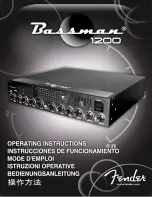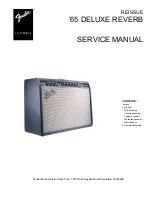
44 February 2023
QST
www.arrl.org
Table 3
Xiegu XPA125B Resistive Load and Loss Testing
VS WR/Impedance
160 M 80 M 40 M 20 M 10 M 6M
10:1/5 Ω
Loss (%)
66%
28%
.20%
20%
.20%
.28%
VSWR
2.2:1 1.6:1 1.6:1 1.4:1 1.2:1 1.5:1
8:1/6.25 Ω
Loss (%)
48%
17%
9%
9%
18%
22%
VSWR
3.9:1 1.8:1 1.6:1 1.6:1 1.4:1 1.5:1
4:1/12.5 Ω
Loss (%)
20%
12%
9%
9%
12%
12%
VSWR
2.2:1 1.7:1 1.4:1 1.7:1 1.8:1 1.2:1
3:1/16.7 Ω
Loss (%)
16%
12%
10%
10%
10%
10%
VSWR
1.7:1 1.8:1 1.4:1 1.5:1 1.8:1 1.2:1
2:1/25 Ω
Loss (%)
12%
12%
12%
8%
8%
10%
VSWR
1.7:1 1.8:1 1.8:1 1.6:1 1.5:1 1.8:1
1:1/50 Ω
Bypass Loss
0%
0%
0%
0%
0%
0%
Bypass VSWR <1.1:1
<1.1:1
<1.1:1
<1.1:1
<1.1:1
<1.1:1
2:1/100 Ω
Loss (%)
<5%
8%
7%
7%
6%
8%
VSWR
1.6:1 1.6:1 1.6:1 1.7:1 1.6:1 1.6:1
3:1/150 Ω
Loss (%)
<5%
10%
10%
6%
8%
10%
VSWR
1.2:1 1.5:1 1.7:1 1.4:1 1.6:1 1.6:1
4:1/200 Ω
Loss (%)
<5%
<5%
<5%
<5%
<5%
8%
VSWR
1.1:1 1.4:1 1.6:1 1.5:1 1.6:1 1.2:1
8:1/400 Ω
Loss (%)
15%
6%
6%.
10%
11%
12%
VSWR
2:1
1.5:1 1.6:1 1.6:1 1.5:1 1.1:1
10:1/500 Ω
Loss (%)
20%
<5%
<5%
12%
26%
28%
VSWR
2.5:1 1.4:1 1.4:1 1.3:1 1.4:1 1.3:1
I went outside the low range for
these tests (see the results in
Table 3).
The XPA125B couldn’t match
extreme resistive impedances on
160 meters. However, it was able to
provide matches on all other bands,
though the losses could be high in
some cases. Also, I often had to
force a re-tune several times to
achieve an SWR less than 2:1, as
measured by my external SWR
meter (the XPA125B internal SWR
meter is inoperative). The XPA125B
antenna tuner does not have any
memories, so you must re-tune
each time you change frequencies,
depending on the mismatch. When
the tuned match is greater than 2:1,
there is no indication of tuning
failure, though the PA will fault if the
SWR is greater than 3:1.
Operating
I was able to test the XPA125B with
my Xiegu G90, Xiegu X5105, and
Elecraft KX3, and a QRP Labs
QCX-mini 20-meter transceiver. I
used the optional CE-19 interface
with the Xiegu radios, and it worked
well by providing keying and auto-
matic band changing for the
XPA125B. The XPA125B control
interface is a miniDIN6 connector,
so I built interface cables for the
KX3 and the QCX-mini using a mini-
DIN6P cable. The KX3 keys the
XPA125B directly. As the QCX-mini
PTT output is 5 V dc on transmit,
and 0 V dc on receive, I originally
built a special interface for this.
However, as the QCX-mini only
operates full break-in, this was a
problem due to the slow transmit/
receive relay in the XPA125B. So,
I just made a manually switched
amplifier keying cable for when
I used this radio.
My HF antenna is a 43-foot vertical,
and the XPA125B autotuner easily
handles the SWR on 60 – 10
meters. I made one SSB contact on
20 meters and received a good
audio report. However, I refrained
from making additional SSB con-
tacts due to the high IMD when run-
ning full power. I felt much better
using CW and made several con-
tacts with each of my four QRP rigs
on 40, 30, and 20 meters.
Conclusion
The XPA125B is a compact 100 W
amplifier that integrates perfectly
with Xiegu transceivers and, to a
slightly lesser extent, with virtually
all other QRP transceivers. The
internal antenna tuner provides all
the antenna system flexibility most
hams will ever need. However,
there are several items to consider:
The Good — The XPA125B is com-
pact and rugged, requires no fan,
monitors many parameters, and is
well protected.
The Bad — The XPA125B doesn’t
meet its typical output power level
specification on 10 and 6 meters.
Also, the input voltage must be set
almost 1 V dc higher in order to
meet the typical power output spec-
ification on the other bands. And
the input power and input SWR
readings are useless.
Additionally, the XPA125B seriously
degrades the IMD performance of
the driving transceiver. Lastly, the
XPA125B does not meet FCC spec-
tral output requirements on 6
meters (an external low-pass filter
would be needed).
Manufacturer
: Xiegu. Distributed
and supported in the US by select
US distributors. Price: $619.95;
CE-19 Expansion Port, $34.95.































